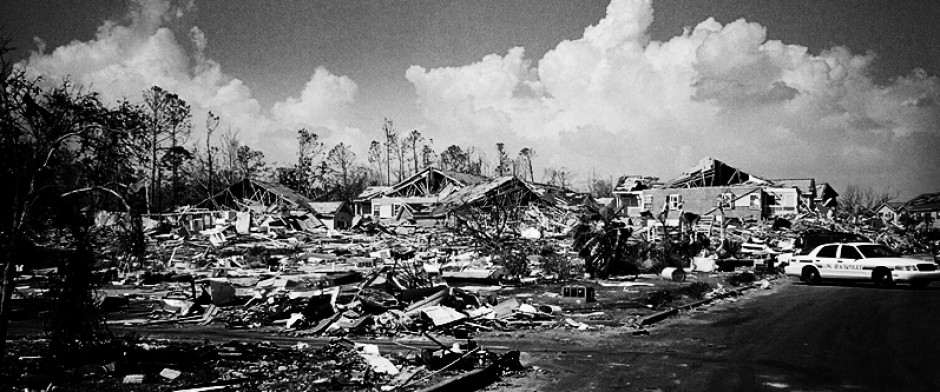One thing no one wants to deal with during a survival situation is illness. In many parts of the world today, food poisoning is one of the most common ailments afflicting countless millions annually. Typically, the onset of symptoms occurs rapidly after ingesting spoiled or contaminated food and includes violent abdominal cramping, nausea, vomiting, fever, and diarrhea. The symptoms usually pass within a few days, but in severe cases of being sickened by bacteria such as e-coli and salmonella, death can occur. Further, studies now have linked even mild cases to long-term health problems such as immune system disorders, arthritis, diabetes, high blood pressure, and kidney failure.
The CDC estimates that each year roughly 1 in 6 Americans (or 48 million people) gets sick, 128,000 are hospitalized, and 3,000 die of foodborne diseases. The 2011 estimates provide the most accurate picture yet of which foodborne bacteria, viruses, microbes (“pathogens”) are causing the most illnesses in the United States . According to the 2011 estimates, the most common foodborne illnesses are caused by norovirus and by the bacteria Salmonella, Clostridium perfringens, and Campylobacter. http://www.cdc.gov/foodsafety/facts.html
When traveling in less developed parts of the world, food poisoning is even more common. Conditions in many of these countries mimic conditions one may experience in the event of a major collapse to include long-term power outage. Compounding the problem in both the underdeveloped world and in a disaster situation, advanced medical help is not likely available. As such, knowing how to prepare for, prevent, and treat it, as well as what not to do will be critical to a quick recovery and potentially survival.
The first thing is to dispel some common myths. Drawing from my experiences over the last decade in impoverished and war-torn countries around the world, food borne illness will eventually afflict everyone given enough time. No matter “how tough” you think your stomach is, I guarantee, there is a stomach bug out there meaner with your number. Further, you never really seem to be able to become “immune” to getting sick. The bottom line is if you eat bad food, you will get deathly ill for most likely at least 24 hours and during that time wish you were dead. Anyone that has experienced true food poisoning knows this first hand. Thus, the first rule is better safe than sorry. When in doubt about food, just ask yourself; is it really worth violently throwing up while simultaneously having uncontrollable diarrhea for 24+ hours?
Next, although foods like seafood and mayonnaise can go horribly bad very fast and certainly are infamous for making people very sick, they are not the only culprits. In fact, anything you put in your mouth that is contaminated can cause severe illness. This includes not just meats and poultry, but vegetables and even the water you drink. Further, if you are one of those people that like to put your fingers in your mouth, pick your teeth, or some other nasty habit, don’t. Your hands will pick up some of the worst of the worst stomach bugs and if you put them in your mouth you are likely to get sick.
Another myth is that people often think that as long as they don’t swallow “bad” food they will be okay. False. Again, going back to the, “if you think it is bad it isn’t worth it,” motto. Once the bacteria or parasite is introduced to your mouth and digestive track, it can make its way via your saliva into your digestive track and make you very ill as it grows and multiplies.
Another myth is that in cases of food poisoning you immediately get ill. That is indeed the case in some circumstances, but in many others, it can take on average 24-48 hours as the pathogen embeds in your digestive track, multiplies, and releases toxins into your blood stream.
All bottled water is good. Be very aware that not all bottled water is the same. In fact, the U.S. State Department tested all of the major brands of bottled water in Pakistan, which includes U.S. name brands, and found only TWO in the entire country met minimal safe drinking standards. In fact, water table in some countries is so contaminated that the only water that is suitable for drinking is water that has been distilled or purified through a mix of processes that include adding chemicals, exposing it to UV light, filtering it, and reverse osmosis treatments.
I especially like the myth that if you drink hard liquor it will kill any potential stomach bugs. Although, anecdotally, I have seen some cases where there may be some truth to parasites such as worms that are adversely affected by alcohol and spicy foods, it doesn’t protect you. In fact, heavy drinking probably means you are more likely to eat some nasty stuff from a street vendor at a late hour and then not only be deathly ill, but also add a hangover and dehydration to the mix. Poor choice.
Okay, so besides knowing what doesn’t work, know what does work. Wash your hands with hot soap and water as if you have an obsessive compulsive disorder. Use alcohol based hand sanitizer before you eat any meal or touch food. Always wash anything that was used to prepare raw food with hot soapy water or even boil it. Before eating “fresh” fruits and vegetables grown in local soil, soak and or scrub them lightly in a weak solution of bleach and water. Cook everything “well done.” Yes, raw eggs and bleeding steak may be macho, but you are not going to be tough when you are balled up in the fetal position on the ground. Drink only purified or water bottled by a reputable dealer from a known source. Finally, when in doubt, don’t eat it.
Now, as I mentioned before, I don’t care how careful you are, if you spend enough time in underdeveloped places, you are going to get sick. That is a fact, 100% true, can’t get around it. It is just a matter of how often, how bad, and what type of illness. Celebrate if you only are sickened by short duration treatable and or curable diseases and illnesses. So, if you have access to pharmaceuticals, stocking up on the following drugs will go a long way to take the edge off of a bad case of food poisoning. The following is a baseline treatment for an average, healthy adult, with no allergies. Always consult a doctor before taking any medications.
- Phenergan in 25 mg tablets taken 1 every 6 hours will alleviate nausea and vomiting (*cease taking once symptoms subside)
- Azithromycin in 500 mg tablets taken 1 a day for 3 days to kill the bacterial infection (*note, it is critical to complete the full cycle of antibiotics once begun)
- Tramadol in 50 mg tablets taken once or twice every 6 hours for pain (*Tramadol is a controlled pain reliever)
- Bentyl in 20 mg tablets taken 1 every 6 hours to alleviate serve stomach cramping
- Oral Rehydration Salts mixed with the proper ratio of water (usually one packet for a liter or quart). Make sure you stay hydrated. Dehydration is one of the biggest problems in cases of severe food poisoning and only makes your situation worse. Drink as much fluid as you can keep down (*note, ORS tastes nasty, but IS what you need as it is properly formulated to not cause increased cramping, bowel irritation, and diarrhea)
- Imodium tablets for diarrhea taken as needed (*note, don’t take anti-diarrhea tablets right away so as to let your system cleanse itself…only take if diarrhea persists after the second day)
At the end of the day though, if you could only have two of the above, get the Azithromycin to kill the bacteria and ORS to keep from dehydrating. Phenergan may be a tie for second place if you can’t keep anything down and certainly makes you feel much better.
Finally, a few short lines on what not to do. Don’t immediately run to take anti-diarrheal medicine. Let your body cleanse itself. Only use anti-diarrheal medication if symptoms persist for more than a day and dehydration is becoming a factor. Do not allow yourself to become dehydrated. With that said, use ORS for rehydration. If none are available, attempt to find Pedialyte used for infant rehydration. If that is unavailable, you can mix a very weak mixture of Gatorade and water or add a bit of salt and sugar to water. If you mix full strength, such as in the case of Gatorade or drink pure water, it is difficult for your bowels to absorb and will cause increased cramping and possibly worsen the situation. In fact, if you consume a mixture of Gatorade or some other electrolyte replacement that is too concentrated, it can actually pull water from circulation into the bowels and cause greater dehydration. Nonetheless, if nothing else is available, it would still be better to plain drink water than dehydrate. On a final note, be cautious about misdiagnosis. Be very careful not to confuse the symptoms of food poisoning or stomach flu with those of more serious situations such as a ruptured appendix, which will cause death if the patient isn’t able to undergo surgery within a short period of time. The most common way of assessing this is to locate where the pain is localized and if it is off to one side or in the lower abdomen. Normally, cramping from food poisoning comes in waves and is centrally located in the abdominal region. Symptoms of a life threatening appendix rupture are persistent, acute, and the abdomen can become inflamed and very painful to the touch beyond the central region of the abdomen.


